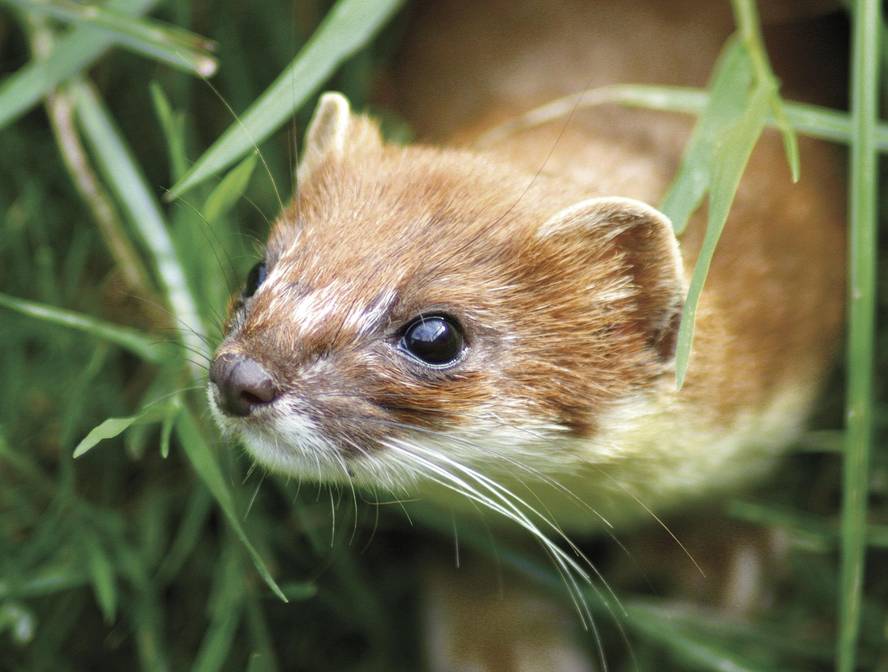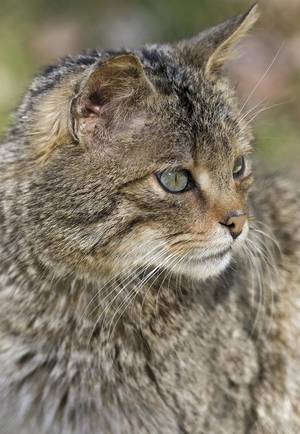Carnivores of Euskal Herria, a dozen... more one?
They are not easy to see or investigate and, in many cases, the little information available makes it difficult to know the status of populations. However, according to Jabi Zabala, head of Ihobe's Climate Change and Biodiversity projects, there are data on most species and very different trends are observed: some species have increased and others have decreased. On the one hand, this is very normal, since, as explained by Zabala, "they are species of the same guild among which there is competition, so when one rises another falls". Many share the same ecological corner and use similar resources. And not only that, it is also common for carnivores to kill themselves: "During food research, remains of other carnivorous species have been found in 80% of studies."
In any case, Zabala believes that the main reason for fluctuations of carnivores in recent years is the change of landscape experienced in the Basque Country: "In the last 50 years there has been a significant decrease in agricultural activities, on the one hand growing fields have been converted into pine forests and, on the other, an intense urbanization or artificialization of flat areas has been carried out. This has had a great impact on the species that surround the river and on those that live around the villages. And as a result of the sharp decline in the land area, the associated species have also been reduced. On the contrary, the extent of the forest has affected forest species. However, keep in mind that the native forest is expanding very slowly and that most are plantations."
Forest expansion to benefit the marten
One of the benefits of the expansion of the forest is that of the marten ( Tuesday). A few years ago it became quite scarce, but what the latest research shows is different. "In the last 4-5 years a very beautiful research has been carried out: the possible excrements of the marten, the grapefruit or the fox have been collected and identified through genetic studies. And it has been seen that the situation of the necklace in Euskal Herria is better than expected." It is fairly well distributed, the population is continuous and has grown in recent years. "It has also appeared in pine forests. Despite being a fairly specialist species, in this case, forest plantations have also come well."

La garduña ( Martes foina) lives in more open areas, especially in areas with not very closed forests and grasslands. "In Euskal Herria has always been one of the most common species and today it is," says Zabala.
The same cannot be said with the edge ( Mustela nivalis): "In the atlas of 1985 [ Atlas of the Continental Vertebrates of Araba, Bizkaia and Gipuzkoa, it was said that it was the most common species, but today it is quite rare", explains Zabala. "When talking to people many say they haven't seen it for years. The species is very related to the surroundings of the hamlet and as it disappears it has suffered a remarkable decline".
The armiño ( Mustela erminea) has always been scarce and the situation has not changed much in recent years. In eastern Navarre there is one population and one in the Encartaciones. "In the Incarnations we have never captured animals or taken pictures, but every year some dead animal appears on the road."
In fact, data on road deaths are important information to know the populations of these species. "Most of the information we have about some species or all are road deaths," explains Zabala. In addition, they try to obtain information with traps, traces, etc., but systematic monitoring is only done in a few cases.
Continuous, European mink

In particular, the European mink (Mustela lutreola) is closely monitored. In the ACBC, for example, all foreign councils have a mink monitoring plan. It is the most serious carnivore. "Before it was in most of the streams of Euskal Herria, but in early 2000 began to introduce the American mink. And although few Americans have recently appeared, Europeans also appear very few." However, according to Zabala, the causes of the decline are two: "one American and the other, especially the wild constructive programs that have existed on the Cantabrian side, with numerous channeled streams that have been isolated".
In the traps placed in the mink tracking programs, sometimes some spill occurs ( Mustela putorius), but rarely. "Catching is very difficult. It has always been said that they are linked to river areas, but at least in Euskal Herria it is not so. In other parts of Europe dwarfs and forest dwarfs are distinguished. Here two have been marked with the spoon and the two went up to the mountain." However, Zabala confesses that we know little about the ass. "I would say it's October, but it has a general distribution, and according to the information there has always been that way. We have no information about whether it has gone up or down."
In the case of otter ( Lutra lutra) there is more information, since it is monitored at the state level every 5 or 10 years. It has increased considerably: "In the year 85 it was declared in danger in the Basque Country, in the year 95 it was found that it was located at a similar level but slightly higher, and in other studies carried out in 2005 and since then it is found that in Alava it is very common that it also appears in Bizkaia. It is widespread in Euskal Herria and has recovered old areas." There is no data from Gipuzkoa, but in Navarre it has also grown, it appears throughout the Ebro. In Álava and Navarra the race areas have not been so affected, and there has grown especially the otter. "It needs a lot of fish and streams with areas of refuge, and even if it is contaminated, the otter can live well in these areas. However, where the otter has grown, the American mink has also increased," explained Zabala.
Outside the streams, but Azkonarra needs plenty of room to take refuge ( Meles meles). In fact, they live in groups in families of 4 to 5 members and perform underground galleries for different cameras. Therefore, they need forests with deep soils. "It is more common than is believed," says Zabalak--, "they are not very abundant, but it is quite common."
The fox ( Vulpes vulpes) is also "very common and has always been". At the end of the 90's the population was slightly reduced by effect of scabies, but currently has good populations. And the wolf ( Canis lupus), XX. Although in the mid-twentieth century it was practically disappeared in the Basque Country, it has been appearing later, and currently they are in the Encartaciones and in the west of Alava. "The Provincial Council of Álava has carried out several studies and has been convinced that this is one or two groups that move a lot between Burgos, Álava and Bizkaia," explained Zabala.
Cats and raccoons
As for the wild cat ( Felis silvestris), it is more difficult to know what its situation is. "It is a little-known species. They don't look and are hard to catch," says Zabala. Some work has been done with footsteps, but how are the footsteps of a cat unknown? ". They are difficult to distinguish, they can be domestic cats in the form of wild cats or hybrids. "Genetic studies in the Scottish area have shown that the number of hybrids is very high. Hybridization is a big problem for the conservation of the wild cat. Here we do not know the number of hybrids or the state of the wild cat. We know that it exists, especially in the mountains, but the data is very scarce", explains Zabala.
Another cat is much more common: the catajineta ( Genetta genetta). It is actually an African animal that entered Europe in the Middle Ages. They were the cats of the Arabs. "Rats on boats and used them as pets to control," says Zabala. It entered and spread throughout southern Spain, throughout the peninsula, then in France, and "is now up to Belgium." He likes scrub and closed forests. "It is very difficult to see. On the mountain it is easier to see the heron or badger, but in the traps it is the one that most fishing".
So far the dozen carnivores that currently live in Euskal Herria. But you may soon have to count the thirteenth. According to Zabala, "some raccoon has appeared. They have usually escaped from zoos or individuals. But in Madrid, for example, they have already formed populations, and although in the Basque Country so far there have been only loose data, the latest trends point to that soon it is possible to complete populations".







